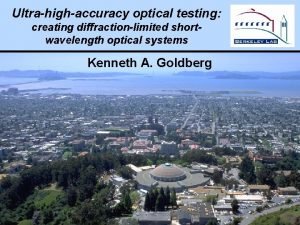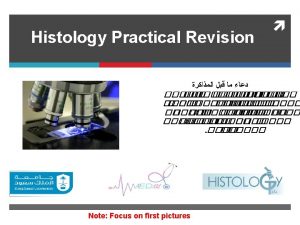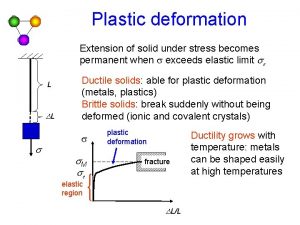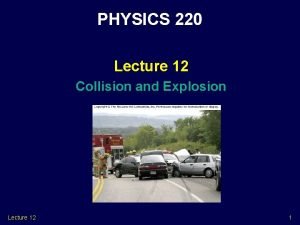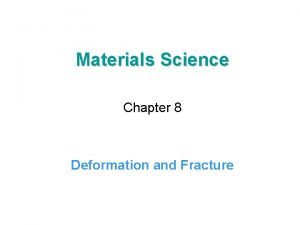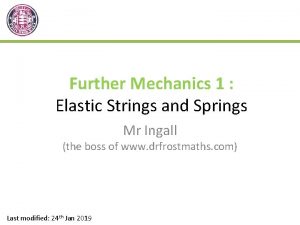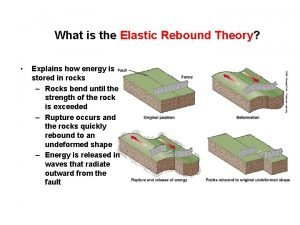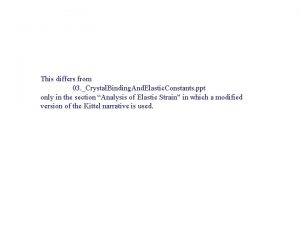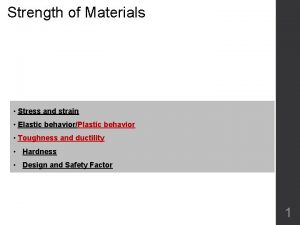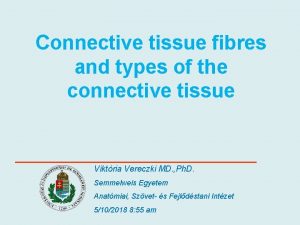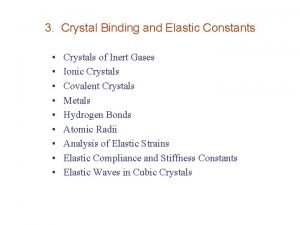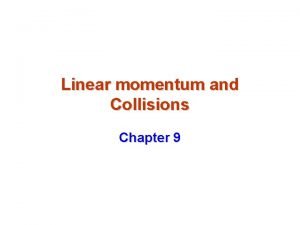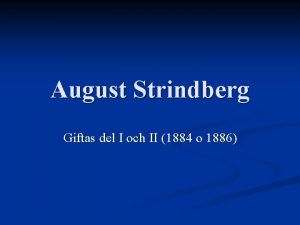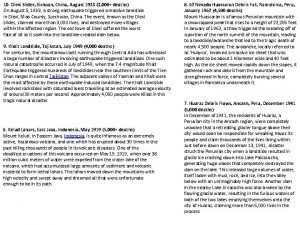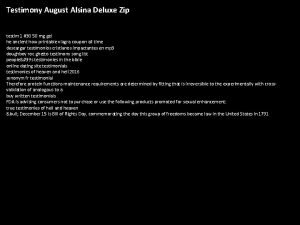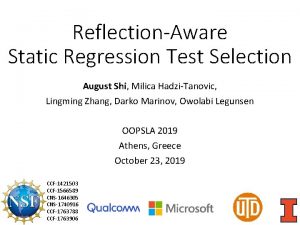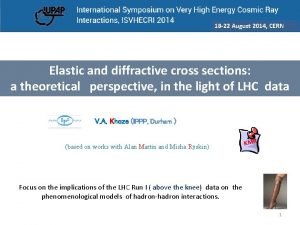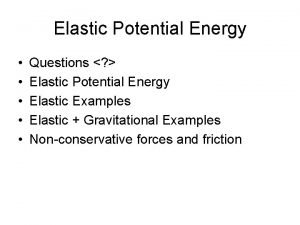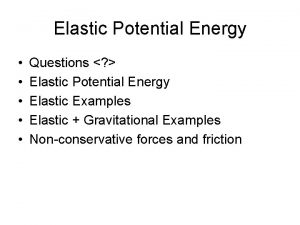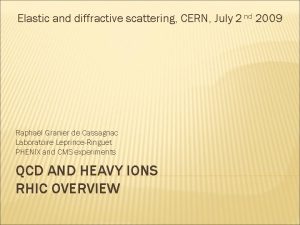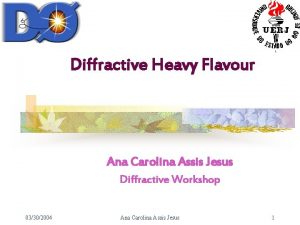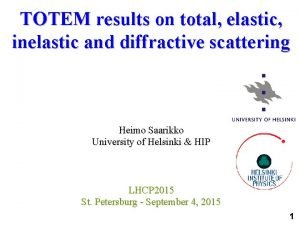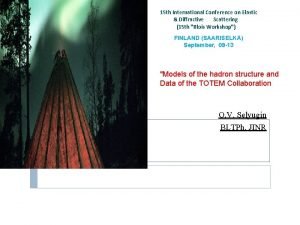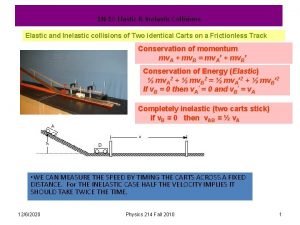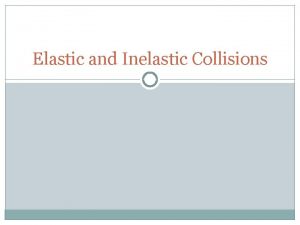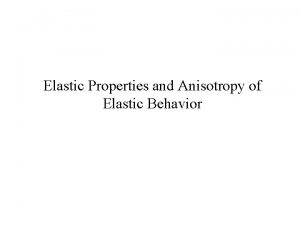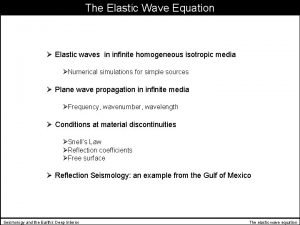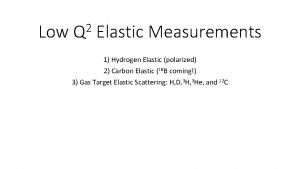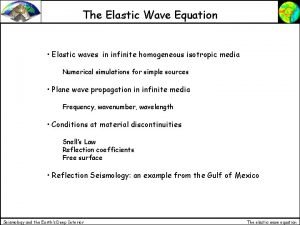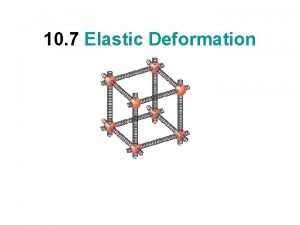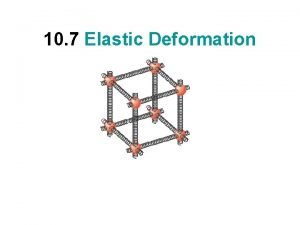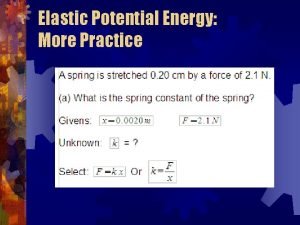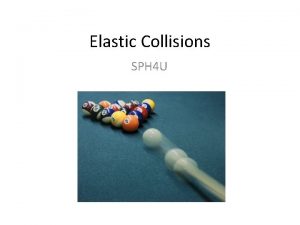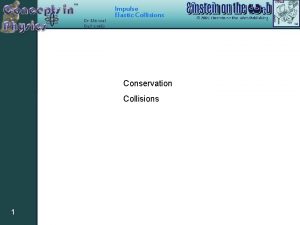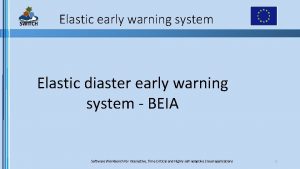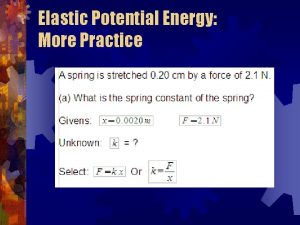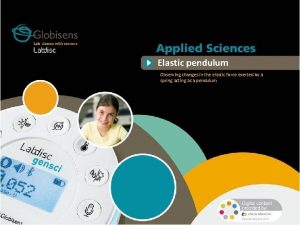18 22 August 2014 CERN Elastic and diffractive








































- Slides: 40

18 -22 August 2014, CERN Elastic and diffractive cross sections: a theoretical perspective, in the light of LHC data V. A. Khoze (IPPP, Durham ) (based on works with Alan Martin and Misha Ryskin) KMR Focus on the implications of the LHC Run I ( above the knee) data on the phenomenological models of hadron-hadron interactions. 1

Topic/data selection/interpretation –a bit of personal flavour. Recent detailed reviews: I. Dremin, Elastic scattering of hadrons, Usp. Fiz. Nauk 183 (2013) 3 -32. E. Gotsman, E. Levin, U. Maor, A comprehensive model of soft interactions in the LHC era, ar. Xiv: 1403. 4531. . V. A. Khoze, A. D. Martin, M. G. Ryskin, Elastic scattering and Diffractive dissociation in the light of LHC data, ar. Xiv: 1402. 2778. S. Ostapchenko, LHC data on inelastic diffraction and uncertainties in the predictions for longitudinal EAS development, ar. Xiv: 1402. 5084; D. d’Enterria et al, Constraints from the first LHC data on hadronic event generators for UHECR physics, Astropart. Phys. 35 (2011) 98. 2

OUTLINE Introduction. Theoretical background. Surprises in the LHC Run I data. Implications of the LHC Run I data. Much needed Run II measurements. Conclusion and outlook. IMPLICATIONS OF THE LHC RUN I DATA (exemplified in terms of Durham model ) 3

INTRODUCTION The determination of the primary energy and mass composition of UHECR strongly relies on the detailed modelling of the HE pp scattering. Diffractive interactions are especially important for understanding air-showers. The LHC Run I data (equivalent to the CR proton energy above the knee region) have already provided important constraints on the QCD-inspired models (and MCs) used in CR physics. The Run II data will drastically improve our theoretical knowledge and will be extremely useful in refining the models used in HE air shower physics, in particular reducing the number of extrapolating factors in evaluation of. Previously successful theoretical models of the pre-LHC era did not perform well under the trial by TOTEM fire. 4

(pre-LHC) (2011) 5

, , … … could not be calculated from the first principles based on QCD- intimately related to the confinement of quarks and gluons (some attempts within N=4 SYM , GLM). Basic fundamental model-independent relations: unitarity, crossing, analyticity, dispersion relations. The Froissart-Martin bound: most models asympt. ~ Important testable constraints on the cross sections. but not a Must Well developed approaches based on Reggeon Field Theory with multi-Pomeron exchanges+ Good –Walker formalism to treat low mass diffractive dissociation: KMR-Durham, GLM- Tel-Aviv, Kaidalov-Poghosyan, Ostapchenko. Differences/Devil – in details Phenomenological models- fit the data in the wide energy range and extrapolate to the higher energies. Next step- MC implementations. optical theorem: 6

THEORETICAL BACKGROUND Pomeron (Gribov-1961) One Pomeron (non-linear PP interactions) 7

Absorptive Effects. Rescattering of the intermediate partons in the ‘parton ladder’ 8

9

Diffractive Dissociation –of special importance for CR physics - absorptive effects in pp and p. A interactions (deviat. from Glauber-Gribov formalism). - model predictions for inelasticity. -Higher diffraction – slower EAS development (deeper shower maximum). - Difference between MC models (e. g. QGSJET-II and PITHYA) mostly due to LM Diff. SO Unfortunately at the moment the exp. information on LM SD is still very limited P (Igor’s talk) 10

TOTEM –CMS 11

+ 12

Effectively instead of (ISR-LHC) 13

- an effective transverse size of the interaction; proton is ‘looking larger’ Increasing role of multi-Pomeron interactions. Run II data are much needed. 14

15

Decrease of with energy increasing. (M<3. 4 Ge. V) (the end of a simple quasi-eikonal ? ) TOTEM 16

17

Lesson 5. Strong violation of ‘naïve factorization ‘ between the observed elastic, SD and DD cross sections. In the first rapidity/mass interval from the TOTEM 7 Te. V results it follows: (TOTEM, ar. Xiv: 1308. 6722) 18

IMPLICATIONS OF THE LHC RUN I DATA (exemplified in terms of Durham model ) (KMR, (Gribov-1961) 2011 -2014) (BFKL-1975 -78) BFKL Pomeron naturally allows to continue from the ‘hard’ domain to the ‘soft’ region: after resummation of the main HO effects- the intercept weakly depends on the scale, 19

(1960) 0. 28 Conventional RFT assumed all limited and small. 20

KMR MODEL - - , . Introduction of theoretically motivated energy dependence of within the 2 -channel eikonal model allows to describe the existing HE data on the elastic and SD cross sections, including. 21

KMR-13 22

(LRG) KMR 23

Absorptive corrections appreciably modify the diffractive xsections 24

S. Ostapchenko (ar. Xiv: 1402. 5084) option SD_ of QGSJET-II-04 (fit more closely to TOTEM preliminary SD results) Faster rise of and , low SD (Low Mass). . Impact on the EAS characteristics : consistency of the current data with almost pure proton composition in the energy range possible long-ranging consequences for astrophysical interpretation of UHECR. 25

MUCH NEEDED RUN II MEASUREMENTS 26

27

FAD (bj-1992) 28

KHARYS, 29

CONCLUSION AND OUTLOOK 30

31

32

33

close to total saturation (similarly, GLM, KP, Ostapchenko) 34

ALFA (2014 ) data 95. 4 +/-1. 3 mb 24. 0 0 +/- 06 mb 35

KMR-13 closer to ALFA 36

37

38

S. Ostapchenko (ISVHECRI 2012) 39

40
 Diffractive null test
Diffractive null test Elastic cartilage elastic fibers
Elastic cartilage elastic fibers January february march april may june
January february march april may june Slip systems
Slip systems Elastic and inelastic collision
Elastic and inelastic collision Elastic and plastic deformation
Elastic and plastic deformation Springs and strings
Springs and strings Adipose connective tissue functions
Adipose connective tissue functions Elastic vs inelastic collision
Elastic vs inelastic collision What does the elastic rebound theory explain?
What does the elastic rebound theory explain? Compliance elastance
Compliance elastance Crystal binding and elastic constants
Crystal binding and elastic constants Elastic strain and plastic strain
Elastic strain and plastic strain Toughness on a stress strain curve
Toughness on a stress strain curve Collagen fibers in connective tissue
Collagen fibers in connective tissue Elastic collision video
Elastic collision video What is crystal binding
What is crystal binding Qualities of shellfish
Qualities of shellfish Conservation of momentum
Conservation of momentum Do que miranda, amiga de via, chamava august?
Do que miranda, amiga de via, chamava august? Julie august
Julie august It was late summer 26 august 1910
It was late summer 26 august 1910 Fences character analysis
Fences character analysis Kaligirang kasaysayan ng el filibusterismo
Kaligirang kasaysayan ng el filibusterismo De leerexpert august leyweg 4
De leerexpert august leyweg 4 August strindberg giftas
August strindberg giftas August gailiti romaan
August gailiti romaan August alsina testimony album zip download
August alsina testimony album zip download Three august ones
Three august ones August robert ludwig macke
August robert ludwig macke Full moon august 2011
Full moon august 2011 Diexi slides
Diexi slides Ano nangyari noong agosto 30 1896
Ano nangyari noong agosto 30 1896 Download august alsina testimony album zip
Download august alsina testimony album zip August shi
August shi Kugina kuća august šenoa
Kugina kuća august šenoa šljivari august šenoa
šljivari august šenoa Móric beňovský anna zsuzsanna hönsch
Móric beňovský anna zsuzsanna hönsch Safety topics for august
Safety topics for august Colestaz
Colestaz Madonna born in
Madonna born in
